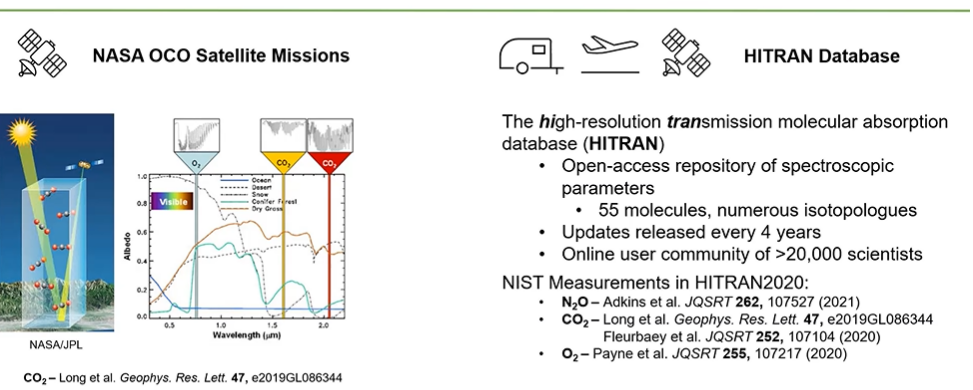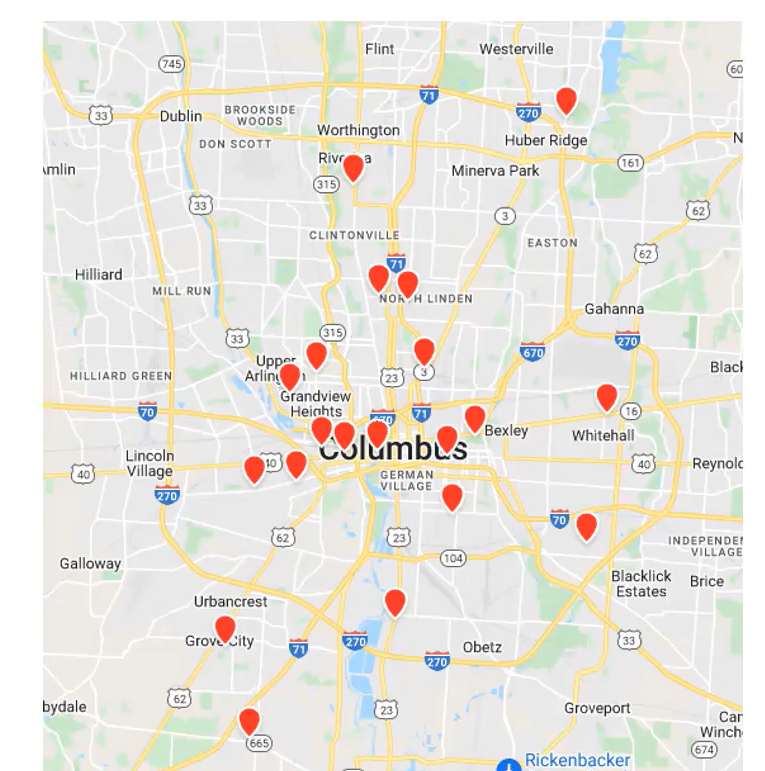NIST Scientist Michelle Bailey Talks Optical Sensing of the Atmosphere
Leah Poffenberger, Corporate Communications Manager, Optica
“To measure is to know—if you cannot measure it, you cannot improve it.” Lord Kelvin
We must accurately measure greenhouse gases (GHG) contributing to climate change in order to take mitigating action. Optical scientists are rising to the challenge. They are deploying atmospheric sensing technologies to measure and monitor GHG and pollution on local, regional and global scales. Their data are helping climate scientists better understand climate change and its global impact.

Michelle Bailey
On Monday, 9 May, Optica launched a three-episode webinar series on optical environmental sensing and the Global Environmental Measurement and Monitoring (GEMM) initiative. The first webinar, Optical Sensing of the Atmosphere—From the Laboratory to Global Monitoring, featured Michelle Bailey, a research chemist at the National Institute for Standards and Technology (NIST) and Optica Public Policy Committee member.
GHG in the atmosphere trap heat and prevent it from dissipating—the greenhouse effect. Measuring the volume and locating the sources of GHG is critical to combating climate change. Ground-based techniques near-continuously measure greenhouse gas emissions on a local scale. Airborne and spaceborne techniques measure on regional to global scales over days or weeks. Optical sensing methods are used across all of these scales for comprehensive global greenhouse gas emissions. According to Bailey, the “best” method for gas monitoring is the one that addresses the problem you’re trying to solve.
Optical spectroscopy for greenhouse gas sensing requires a model using reference data to determine the concentration, composition and chemical origin of a gas. Bailey’s group at NIST develops such high-quality reference data in precisely controlled environments. These data are critical to sensing projects such as the NASA Orbiting Carbon Observatory (OCO) satellite missions. An open-access repository of spectroscopic parameters used by more than 20,000 scientists, the high-resolution transmission (HITRAN) molecular absorption database relies on her work. Bailey’s group is also working on new methods of spectroscopic analysis that could eliminate reliance on reference materials and advance the ability to identify greenhouse gas sources.

Caption: High-quality reference data from NIST is used to support other projects, such as NASA OCO missions and HITRAN
Image Credit: Michelle Bailey
While working with the GW Laser Analytics research group, Bailey developed optical sensors that could be used in a remote field environment—in this case, in Alaska—to better understand the vulnerability of permafrost to thawing and its resulting carbon emissions. Her team, in partnership with NASA Goddard Spaceflight Center and the University of Alaska, Fairbanks, successfully deployed two types of low-cost, low-power optical sensing units to remote locations in Alaska. Their research uncovered a link between the duration magnitude of diurnal cycles of carbon dioxide with meteorological conditions but ultimately could not answer why these changes happen, reinforcing the need for continued field campaigns to better understand environmental changes.
In collaboration with American Geophysical Union’s Thriving Earth Exchange (TEX), Bailey has been monitoring air quality for public health. As a community science fellow, Bailey collaborated on a project to deploy low-cost particulate detectors across Columbus, Ohio. They started collecting data in January of 2022. Over the next year, these sensors will collect data in 10 neighborhoods to track changes in air quality over time. Led by community members, they will study inequities in air quality across neighborhoods, and seek solutions to be implemented specific to individual areas.

Caption: Low-cost air quality sensors were deployed across Columbus, Ohio
Image Credit: Michelle Bailey
In order to leverage local-scale measurements to better monitor the environment across the globe, Bailey also works with the GEMM initiative, a collaboration between Optica and AGU. The GEMM initiative taps into expertise across Optica and AGU to develop creative monitoring solutions for greenhouse gases, air quality monitoring or any other environmental parameter. In order to promote GEMM to the global community, Bailey participated in the presentation of GEMM at COP26, the UN Climate Change Conference in Glasgow in 2021.
A recording of this webinar is available online. To learn more about optical sensing in the environment, register for the second webinar in this series, Sensing in Dairy Farming and its Role in Green House Gas Mitigation, which will be held on 23 May from 11:00 - 12:00 - Eastern Daylight Time (UTC - 04:00). Get involved with Optica’s Global Policy and Public Affairs efforts supporting of optics and photonics worldwide.
